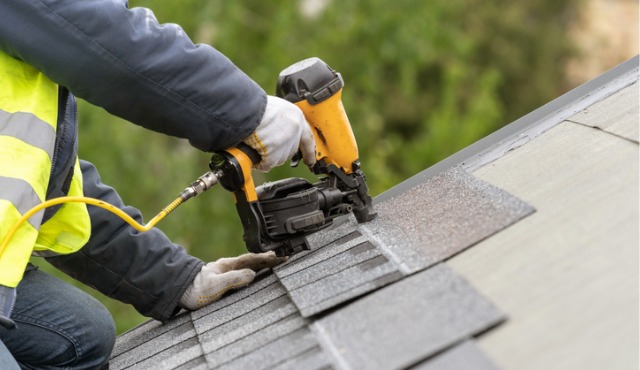By Brooke Chaplan
Your roof is a critical feature of your home. It protects your family, your belongings, and the structure of your house from the outside elements. When it comes to roof installation, it's essential to ensure that every step is done correctly to avoid potential complications down the road. A poorly installed roof might lead to leaks, water damage, and even more severe problems like mold and mildew. In this blog post, we’ll go over the essential steps that homeowners should take to ensure a successful and durable roof installation.
Hire a Qualified Roofing Contractor
The primary step to a successful roof installation is to work with a qualified roofing contractor. Seek out a contractor with a solid reputation, positive reviews, and a license. The contractor must be experienced and knowledgeable in all the specifics of the roofing industry and your particular roofing material. Once you have found a few potential contractors, ensure you get multiple quotes so that you can compare the costs and scope of work offered. Finally, before settling on a particular contractor, make sure they are insured and have a warranty in place.
Choose the Right Materials
Different roofing materials have different benefits, costs, and lifespans. Before you start your roof installation project, research the various types of roofing materials, their durability in your climate, and their estimated lifespan. Some popular roof materials include asphalt shingles, metal roofing, and single-ply roofing. Ultimately, the material you select will depend on your budget, the slope of your roof, the durability required, and your personal preference.
Prepare Your Property
Before the roofing materials are delivered to your property, clear the area where the installation will take place. This involves removing any outdoor decor, plants, furniture, or other belongings from around the perimeter of your home. This will help the roofing contractor work safely, reducing property damage and potential injury. Additionally, make arrangements with your neighbors, if necessary, for parking space for the contractor's vehicle and dumpster.
Removal of the Old Roofing
Before a new roof can be installed, the old one must be removed. This involves stripping the old materials down to the roof deck and checking the roof's base. Underlying issues must be addressed before new roofing can be installed. To avoid any hazardous debris or shingles littering your property, ensure that the contractor has a strict debris removal plan in place to ensure there will not be pieces of roofing scattered around your property after the job is completed.
Monitor the Installation Process
Throughout the installation process, monitor the contractor's work to ensure that the job is done well. It might feel like you're being nitpicky, but doing so is vital because any mistakes now will result in significant problems later. Ensure that the materials are installed per the manufacturer's standards and local codes. Confirm that the appointed supervisor is overseeing all aspects of the job, and make adjustments, if necessary.
As a homeowner, ensuring that your roof is installed correctly is crucial. A well-installed roofing system not only enhances your home’s curb appeal but also efficiently protects your family and belongings from the outside elements. Following the five steps outlined above will help you attain the beautiful and durable roofing system you need to safeguard your property for years to come. Working with a reputable, experienced contractor, selecting quality materials, preparing your property, removing the old roof, and monitoring the installation process are all necessary steps for a successful roofing installation that lasts.
Brooke Chaplan is a freelance writer and blogger. She lives and works out of her home in Los Lunas, New Mexico. She recommends contacting local roofing specialists like BMF Contracting for more roofing tips. For more information, contact Brooke via Twitter @BrookeChaplan.








